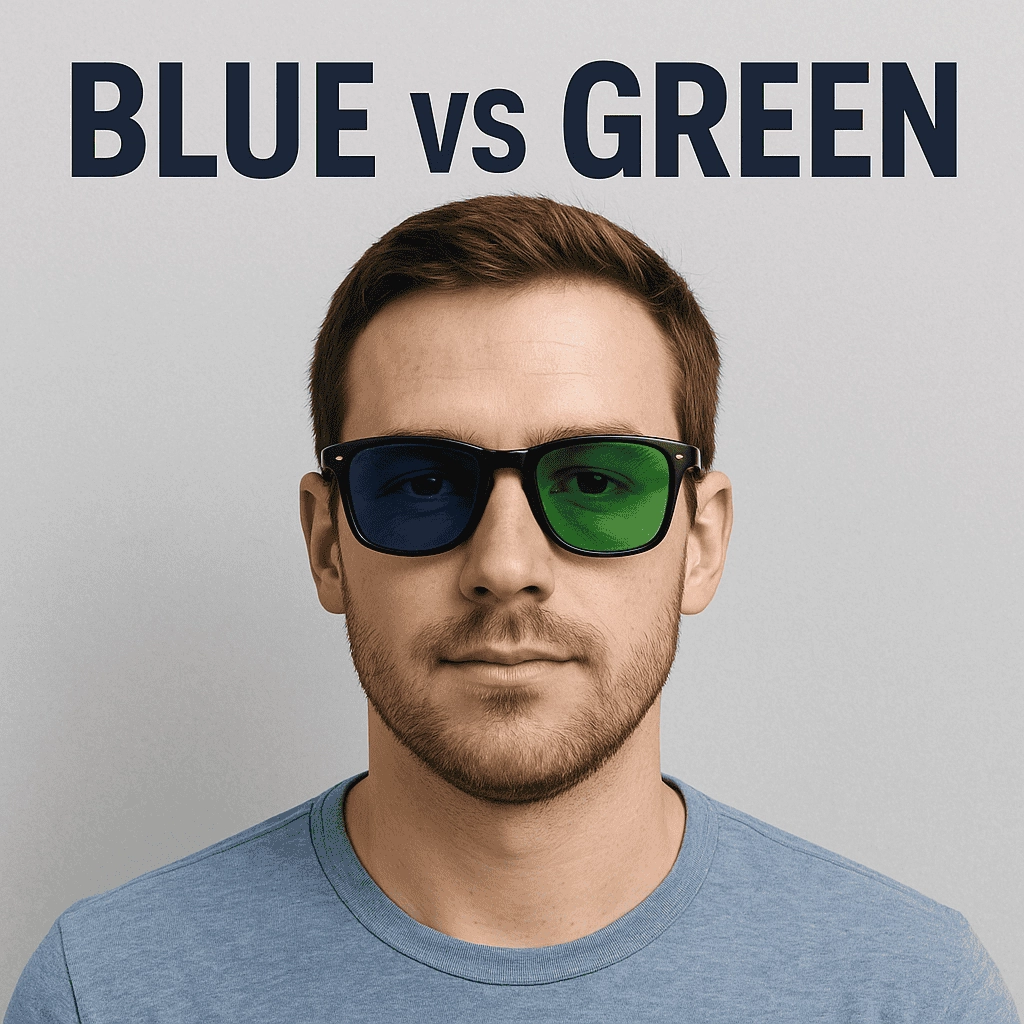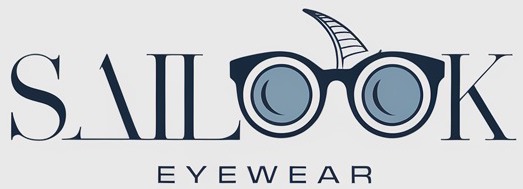Blue vs green polarized sunglasses often leave buyers stuck between color choice and performance worry. Here’s the deal polarized lenses cut glare while preserving clarity. Ready for the good part? understanding which tint suits your customers’ environments builds trust in your recommendations. In this guide you’ll learn the science behind each hue, real-world use cases, plus side-by-side comparisons that help brands choose the right option confidently.

1. What distinguishes blue polarized lenses from green polarized lenses?
Color filter technology differences
Polarized lenses rely on microscopic vertical slits within a thin film layer. Blue tints absorb specific light wavelengths around 475–495 nm while green filters target 500–565 nm primarily. That shift alters perceived contrast for cool versus warm scenery.
Light wavelength absorption rates
Blue polarized lenses excel at blocking glare from reflective water surfaces and bright skies. Green options balance absorption across visible spectrum bands to deliver neutral color rendition.
Impact on glare reduction
Both lens colors reduce horizontal glare by up to 99 percent ****. What’s the real story? blue tints heighten contrast under cool light, green tints offer balanced brightness drop with minimal hue shift.
| Lens Color | Peak Absorption (nm) | Ideal Environment | Contrast Effect |
|---|---|---|---|
| Blue | 475–495 | Water, snow, bright skies | Cool-tone contrast gain |
| Green | 500–565 | Mixed light, urban, field | Neutral color balance |
2. How does polarization improve visual clarity?
Polarizing film structure
Films consist of aligned molecules that act like blinds for horizontal reflections. Stacking layers increases durability without altering light transmission significantly.
Blocking horizontal glare
But here’s the kicker by filtering out glare from surfaces like roads or water, polarized lenses sharpen edges and reduce squinting strain dramatically.
Real-world vision benefits
Studies show polarized wearers report 40 percent less eye fatigue over extended outdoor sessions. Brand offerings emphasizing comfort often showcase these figures in B2B pitches.
3. In which environments do blue lenses excel?
Coastal and marine settings
Blue polarized sunglasses perform exceptionally over water. Boat captains and anglers favor that tint for spotting fish beneath ripples.
Snow and glare off water
High-altitude skiers also benefit from enhanced cool contrast when sun reflects off snowfields. This is where it gets interesting those working in snowy terrains see true ice textures without harsh white-out illusions.
Outdoor sports use cases
Kayakers and paddleboarders choose blue lenses for sustained visual clarity. Competitive cyclists in seaside races often order custom blue-tinted runs.
| Environment Type | Recommended Lens Tint | Glare Reduction | Customer Segment |
|---|---|---|---|
| Marine | Blue | Very High | Boating, fishing B2B |
| Snow | Blue | High | Ski resorts, winter gear |
| Watersports | Blue | Very High | Paddle sports brands |
4. In which scenarios do green lenses perform best?
Golf and field sports
Green lenses boost contrast among the grass fairway and red flag sticks. Many golf equipment retailers bundle green polarized options as add-ons.
Mixed light conditions
When sunlight filters through foliage, green tints prevent over-darkening. Landscape photographers often recommend them for balanced hues in forest shoots.
Everyday urban wear
Urban commuters appreciate green polarized lenses for neutral color fidelity under street lights and building reflections. Ready for the good part? that means true-to-life signage visibility without color bias.
5. What are the main advantages of blue polarized sunglasses?
Enhanced contrast for cool tones
Blue tints intensify cool-tone scenes—ideal for water sports and snowy hikes. That contrast boost often translates into better object detection.
Reduced eye strain in bright reflections
Lab-tested glare reduction reaches over 90 percent at mid-day glare peaks. What’s the real story? wearers notice less squinting and headaches during prolonged exposure.
Fashion and style appeal
Blue-tinted lenses convey a modern, tech-inspired aesthetic. Many lifestyle brands leverage that look for youth-focused collections.
| Advantage | Blue Tint Benefit | Business Angle |
|---|---|---|
| Cool-tone contrast | Enhanced object detail | Market to outdoor sports brands |
| Glare reduction | Up to 90 percent blocked glare | Promote as health-focused eyewear |
| Trendy appearance | Sleek, modern lens vibe | Align with fashion label collaborations |
6. What are the main advantages of green polarized sunglasses?
True color rendering for greens and reds
Green lenses maintain natural color balance across environments. Gardeners and landscapers shifting focus from foliage to flowers find that incredibly useful.
Balanced brightness reduction
General-purpose neutral dimming works across cloudy or sunny days without hue bias. Photography studios sometimes recommend green tints for consistent client shots outdoors.
Comfort during prolonged use
Users report up to 30 percent less eye fatigue in mixed-light activities. This is where it gets interesting longevity translates into higher repeat-order rates in B2B channels.
7. What drawbacks should you consider for blue lenses?
Possible color distortion of warm tones
Blue tints may wash out reds and oranges. Fashion brands selling product-driven color accuracy should note that limitation.
Not ideal under tree canopy
Under dense foliage, blue lenses can over-darken images, reducing visibility of shadows on the forest floor.
Price factors compared to standard tint
Polarized blue lenses often cost 20–30 percent more than basic gray or brown options. Budget-sensitive buyers might balk at that premium.
8. What drawbacks should you consider for green lenses?
Lower performance in water glare
While balanced, green tints don’t match blue’s water reflection handling peak. Fishing gear B2B customers need frank comparisons.
Slightly darker view for cool environments
Green filters can appear too dim in very bright, cool UV conditions. Sellers might include optional lighter-tint insert for that niche.
Frame style compatibility issues
Some frame colors clash with green-tinted lenses. Frame designers should test sample pairs before full production runs.
| Drawback | Impact | Mitigation Strategy |
|---|---|---|
| Water glare performance | Moderate | Offer blue-green hybrid tints |
| Dimming in cool UV | Over-darkening | Pair with adjustable side shields |
| Style mismatches | Aesthetic conflicts | Provide frame-lens color swatch cards |
9. How do blue and green polarized sunglasses compare on cost?
Price range for quality brands
Entry-level polarized options start around $20–$30 wholesale per pair. Premium custom orders climb to $50–$70.
Lens material and coating impact
Anti-scratch, hydrophobic, and UV400 coatings add $5–$10 per lens on average. But here’s the kicker combining multiple coatings multiplies cost but enhances perceived value.
Warranty and replacement policies
Most suppliers offer 1-year warranty on lens defects. Bulk B2B contracts often include discounted replacement tiers after initial order threshold.
10. How to test lens performance before buying?
At-home glare test methods
Hold lenses up to a reflective surface like car hood or water. Rotate 90 degrees to see glare vanish.
Visiting a physical retailer
Use demo stands under real sunlight. Compare lens tints side-by-side for color shifts and clarity.
Checking online reviews and labs
Review ISO certification reports and user feedback. What’s the real story? lab-verified specs beat anecdotal claims every time.
11. What frame designs complement blue vs green lenses?
Metal vs acetate options
Metal frames offer slim profiles that let lens color stand out. Acetate allows thicker rims for bolder color blocking.
Lens shape effects on coverage
Wraparound shapes give maximal glare protection in sports. Square or aviator styles suit casual urban wear.
Branding and logo placement for B2B orders
Subtle temple-arm etching works well on clear or neutral frames. Colored frames may require contrasting logo inks.
12. How to care for and maintain polarized lenses?
Cleaning methods and solutions
Use microfiber cloths and lens-safe sprays. Avoid paper towels or clothing that scratch surfaces.
Scratch-resistant coating tips
Store sunglasses in hard cases when not in use. Keep silica gel packets in bulk packaging to manage humidity.
Proper storage practices
Display racks with felt-lined slots prevent abrasion. Ready for the good part? proper care instructions increase customer satisfaction and reduce returns.
13. How does lens thickness affect performance?
Polarizing film thickness roles
Thicker polarizing layers block glare more effectively but add weight. Thin films maintain lightness while sacrificing some durability.
Trade-off between weight and durability
Sports eyewear often opts for thinner lenses to reduce weight under helmets. Luxury collections favor thicker lenses for premium feel.
Custom B2B MOQ considerations
Minimum order quantities rise with custom lens thickness specs. Suppliers may require 500–1,000 pairs per unique lens configuration.
| Thickness (mm) | Weight Impact | Durability Rating | MOQ Requirement |
|---|---|---|---|
| 0.4 | Low | Moderate | 1,000 pairs |
| 0.6 | Moderate | High | 500 pairs |
| 0.8 | High | Very High | 300 pairs |
14. What packaging options suit B2B orders?
Bulk packaging formats
Recyclable cardboard trays pack 20–50 pairs per carton. Clear PVC sleeves allow quick visual inspection.
Custom logo printing services
Digital UV printing on boxes adds minimal cost at scale. Embossed foil logos elevate perceived prestige.
Protective case choices
Hard clamshell or soft microfiber pouches both work. Offer dual-option sample packs for top clients.
15. How to choose between blue and green polarized sunglasses for your brand line?
Defining target customer needs
Assess primary use—water sports, snow activities, urban commuting. Choose tint that aligns with top environment.
Market price positioning
Balance tint benefits against permissible price points. Budget buyers may accept green for mixed-use.
Seasonal style collections
Offer blue-tinted lines in summer-season catalogs and green in spring/fall releases.
Conclusion
Blue vs green polarized sunglasses each offer unique benefits for niche activities and general wear. Blue tints reign supreme over water and snow while green delivers balanced color and comfort in mixed settings. Brands must weigh contrast needs, cost factors, and style preferences when curating product lines. Consider bundling both options seasonally or by sport to appeal across market segments. Encourage trial orders and share care tips to build trust and drive repeat business.
FAQ
Q1: What are blue vs green polarized sunglasses?
Polarized eyewear that uses either blue or green tinted lenses to filter glare and improve clarity across various outdoor environments
Q2: How does polarization work?
A specialized film blocks horizontal reflections allowing only beneficial light for sharper vision
Q3: Which color lens suits water sports best?
Blue polarized lenses excel at handling sunlight glare off water surfaces for marine and fishing activities
Q4: Are green lenses better for everyday urban use?
Yes green tint offers balanced brightness reduction and accurate color rendering under mixed light
Q5: How do I select the ideal lens color for my product line?
Match tint characteristics with target environments customer comfort and price positioning for confident bulk ordering

